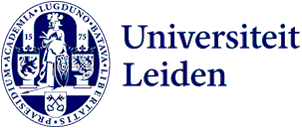
Bombastic publications encouraged millions of Dutch people to emigrate
After the Second World War almost three million people emigrated from the Netherlands to countries such as Canada and Australia. The government information was anything but objective, Professor by Special Appointment of Dutch Studies/Dutch Literature Ton van Kalmthout concludes in his inaugural lecture.
After the war there was a mass exodus of Dutch people who dreamt of a better life overseas. They had their own reasons to pack their bags: overpopulation, unemployment, food shortages, housing shortages, the stultifying environment or a dramatic or dubious war history, says Van Kalmthout.

Booster literature
For long after the war, the Netherlands had big problems to contend with such as a housing shortage, so for decades people were encouraged to emigrate to countries such as Canada, the US and South Africa. Hence the bombastic publications by the Dutch emigration service. The booklet A leap in the dark. Emigration, what is it? (1959) ends with a slogan straight from an advert: ‘Achieving life satisfaction: That’s what emigration is about!’ Van Kalmthout: ‘It’s booster literature that praises the emigration countries for their space, employment and pleasant climate and the cheerful and welcoming population.’
The most popular countries were Canada, the United States, South Africa, Australia, New Zealand, Israel and Brazil. They attracted almost three million Dutch migrants in the period 1946-1992.
Range of sources
Van Kalmthout researches the different functions of emigration literature: what picture do the publications paint of migration, the migrants themselves and the possibilities in the emigration countries? He studies novels, guides, brochures and propaganda material. He also researchers autobiographical texts such as books of correspondence, collections of interviews, memoires and travel journalism.
Tough migrants
These publications paint a very positive, almost heroic picture of the emigrants themselves: tough, hard workers, thrifty and tenacious, and popular in the receiving country, says Van Kalmthout. In his inaugural lecture he focuses on publications about Australia. The books and guides from the 1950s and 1960s are often extremely racist in their descriptions of the indigenous people, the Aboriginals. They are described, for instance, as ‘the most primitive people still walking the earth.’

Warnings about a dissolute life
Van Kalmthout noticed that many publications about Australia adopt each other’s one-sided depictions of the country. But some texts draw attention to the drawbacks of migration and are even ‘antipropaganda’. In the book ‘I am going to emigrate!’ (1954) three Dutch clergymen warn about the dissolute life in Australia and advise against making the crossing.
Disillusioned emigrants
Texts by migrants themselves, in memoires and books of correspondence for instance, are just as diverse as the authors themselves, ranging from tales of bliss to painful stories of disillusionment. Over the next few years Van Kalmthout wants to expand the research to include the role of literature in migration processes as well as, for example, English literature and more emigration countries. Emigration is an inexhaustible source, he says. Just look at all the TV shows about people emigrating. ‘The adventure of emigration, the difficulties or looming failure: it’s a really good way to get a story going or to give it a new twist.’
Ton van Kalmthout is Professor by Special Appointment of International Exchange of Dutch Literation in Historical Perspective. He researches the dissemination of Dutch literature abroad and the import of German, French and English literature in the 19th century.
Photo above article: Waving off loved ones who are making the crossing to America with the Holland America Line on 14 July 1951. Carel de Vogel/Anefo
Text: Linda van Putten
